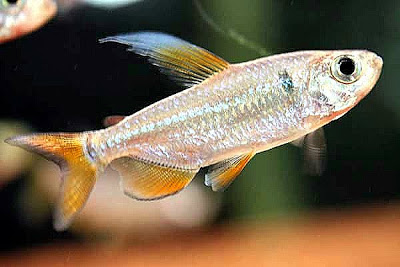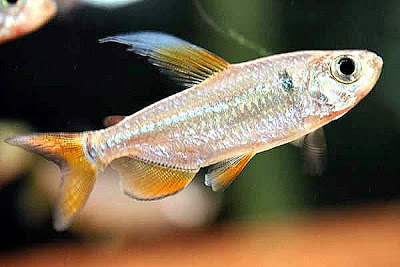Every respectable local fish store offers a range of tetras from South America and less usual species crop up with reasonable regularity. Beyond the near-ubiquitous congo tetra, Phenacogrammus interruptus, it is unusual to find any African tetras in UK fish stores. I don’t think the situation is much different in Germany or the US. Over the last few years, however, a number of beautiful new species have been imported. Hopefully some will become established in the hobby and more widely available. Like congo tetras they are larger than their familiar South American cousins at 3-8 inches long and need spacious homes.
 Distichodon noboli (from Fishbase)
Distichodon noboli (from Fishbase)
 Distichodon sp. Black and Red Lefini River
Distichodon sp. Black and Red Lefini River
 Alestopetersius brichardi ( also seems to be known as Phenacogrammus ansorgii)
Alestopetersius brichardi ( also seems to be known as Phenacogrammus ansorgii)










